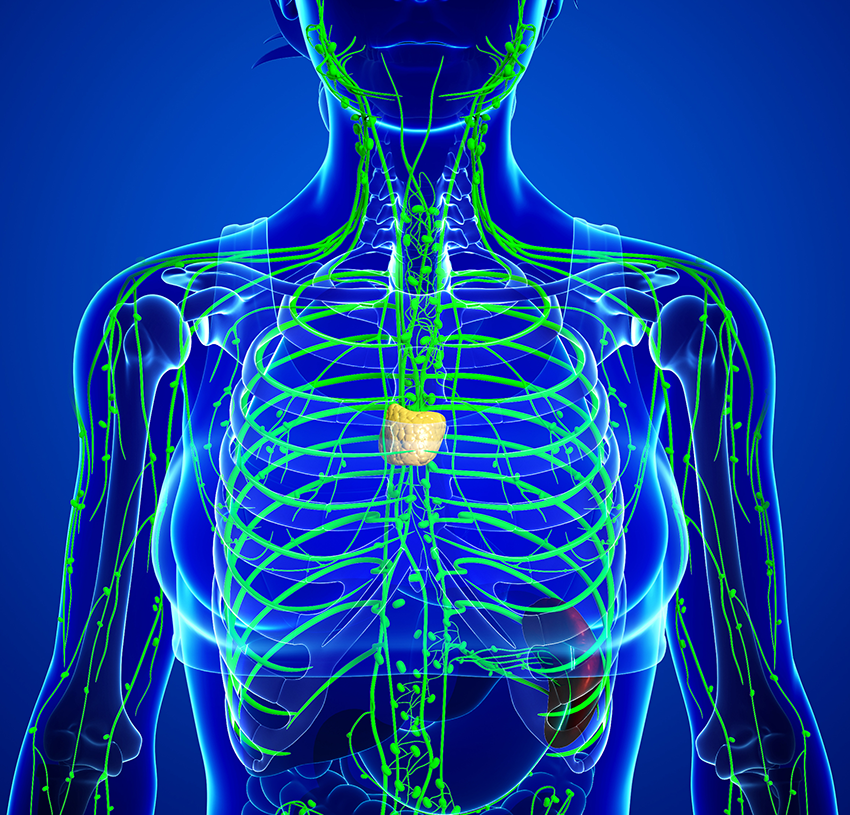Your body’s circulatory system consists of far more than a beating heart and a closed system of blood vessels. It also includes your lymphatic system, which is an open, passive system that exists between every cell in your body. The often-overlooked lymphatic system is indispensable to your immunity and health, as it carries nutrients to and removes toxins from all your cells. It also transports white blood cells (lymphocytes) that trap and remove harmful microbes such as bacteria, viruses, and molds and eliminate damaged or pre-cancerous cells. You can suffer various ailments if your lymphatic system isn’t functioning properly.
What Is Lymphatic Drainage?
Lymphatic drainage is the natural function performed by your lymphatic system. As blood flows throughout your body, blood plasma leaks into the interstitium, which is the space between cells. This thin, yellowish interstitial fluid is called lymph. It is a multicomponent mixture of water, nutrients and proteins, lymphocytes, and all the substances your cells produce and excrete. As your muscles contract, lymph is squeezed into lymphatic capillaries and then into larger lymphatic vessels. These drain into lymph nodes all over your body. The largest nodes are in the neck, groin, and armpits. The lymph nodes filter out harmful substances, and the purified lymph flows into the lymph ducts. From here, it is returned to your bloodstream.
Lymphatic drainage problems can occur for a wide variety of reasons, including genetic, lymph node removal or cancer, chronic infections and inflammation, poor nutrition, lack of movement, surgical procedures, and more. If lymph doesn’t drain properly, your lymphatic system may become congested and inflamed. This can cause painful swelling known as lymphedema.
What Is Lymphatic Drainage Therapy?
There are different types of lymphatic drainage therapies, including Manual Lymphatic Drainage (MLD) and Electro-Lymphatic Therapy (ELT). Tummy Temple has expert massage therapists trained in lymphatic massage techniques who can provide a hands-on approach and/or use ELT apparatus in a session.
Manual Lymphatic Drainage:
This gentle massage technique moves lymph out of an affected area and stimulates lymph nodes. The therapist applies light pressure to stretch the skin and boost lymph flow in the correct direction. This specialized and deeply relaxing massage technique aims to help the body maintain proper blood circulation, body fluid balance, and immune functions.
Electro-Lymphatic Therapy:
This is a gentle, equipment-based, light touch, non-invasive technique to stimulate the proper flow and drainage of the lymphatic system. A combination of vibrational, light and electrical waves helps to stimulate lymph flow by causing the dissociation of proteins that have become trapped in the interstitium. When trapped proteins (not to be confused with nutrient proteins) release their bonds, the stagnant lymph is liberated and will flow out into its normal filtration and reabsorption channels. In comparison to standard lymphatic massage, ELT can penetrate up to 8 inches into the tissue and provides a more efficient pathway for lymphatic detox. This therapy supports proper fluid balance throughout the body, enhances immune function, and provides a powerful means of detoxification. All forms of inflammation respond favorably to this therapy.
Lymphatic Drainage Therapy is suggested for the average healthy person for 6-8 weeks per year. For persons with severe lymphatic congestion, this is considered a starting point. Advanced health concerns can require ongoing treatment for 3-6 months, followed by maintenance care.
What Does the Lymphatic System Do?
The lymphatic system eliminates waste and protects your body from disease. It has five major functions:
- Draining excess fluid from all your body tissues.
- Absorbing fats, water-soluble vitamins, and proteins from your digestive system and carrying them to the bloodstream.
- Releasing white blood cells to fight diseases and infections.
- Filtering toxins out of your body fluids.
- Transporting waste products and damaged cells away from the tissues.
What Are the Symptoms of Poor Lymphatic Drainage?
- Fluid retention can cause swelling and pain in the arms, legs, fingers, toes, head, or neck.
- The affected area may have aches and pains or a feeling of heaviness.
- Swollen lymph nodes that do not go down.
- You may notice skin problems such as discoloration, blisters, infection, or fluid leaking.
- It can cause earache, vision problems, or nasal congestion.
- You may have difficulty breathing, swallowing, or talking.
How Does Lymphatic Drainage Therapy Work?
Lymphatic Drainage Therapy works by redirecting lymph to functional parts of the lymphatic system. This great spa therapy stimulates the contraction of lymphatic vessels and helps decongest the affected area. It is mild, non-invasive, and will bring you relief and improved functionality.
Lymphatic Drainage Therapy can:
- Alleviate edema and lymphedema, and other inflammatory conditions.
- Enhance the function of the lymphatic system
- Boost immunity.
- Provide relief from chronic pain.
- Combat fatigue and restore energy.
- Improve the function of joints.
- Decrease the time for postoperative healing.
- Reduce swelling.
- Soften scars and fibrotic tissue.
- Invigorate your sense of well-being.
Our specialized therapists and naturopaths are here to offer you the best possible care and advice. Contact Tummy Temple to try Lymphatic Drainage Therapy today so you can optimize your lymphatic system and boost your overall health!




